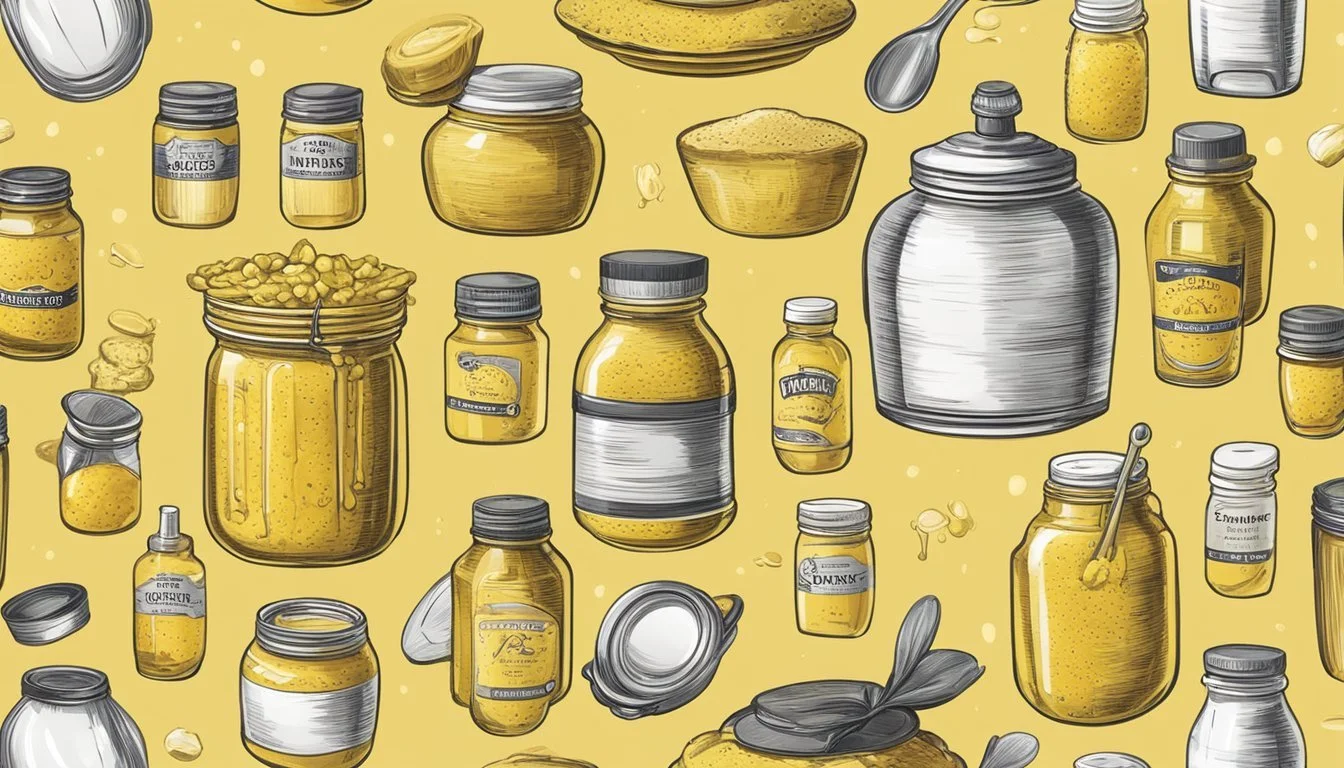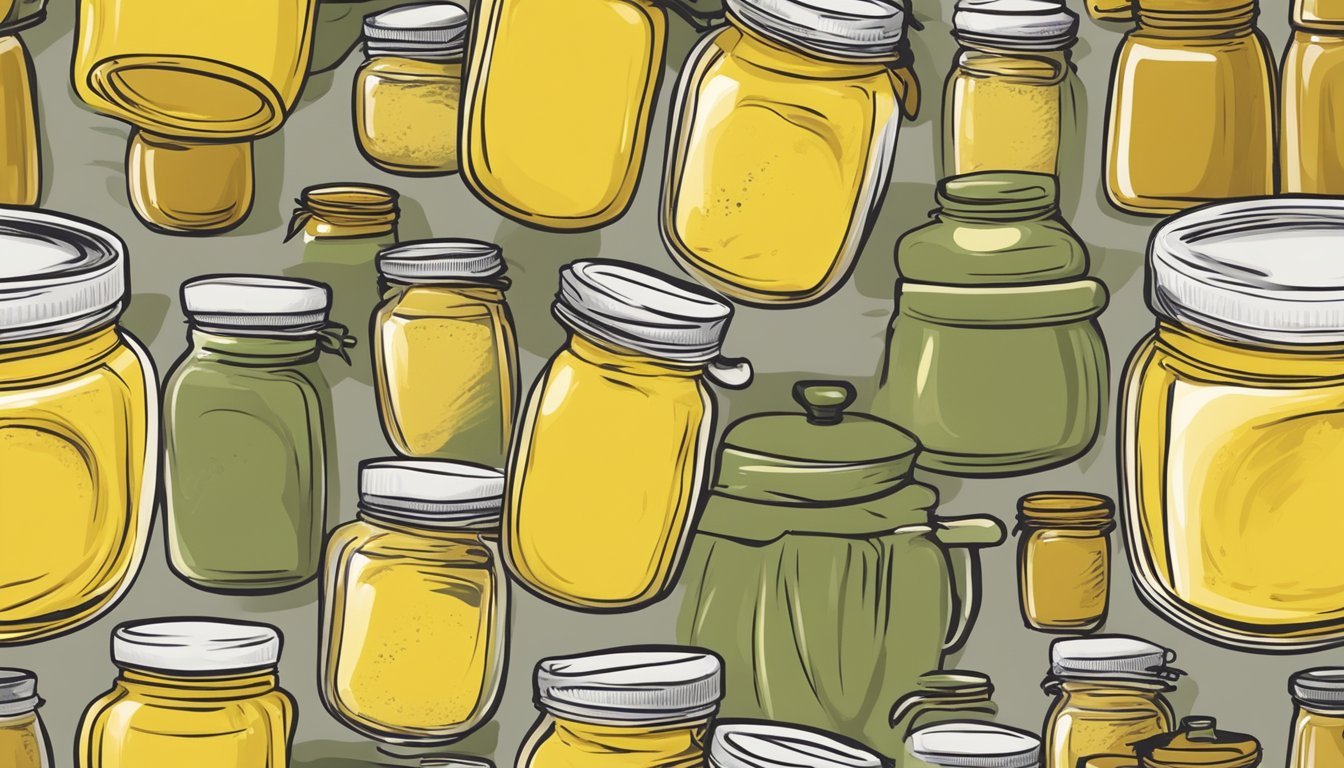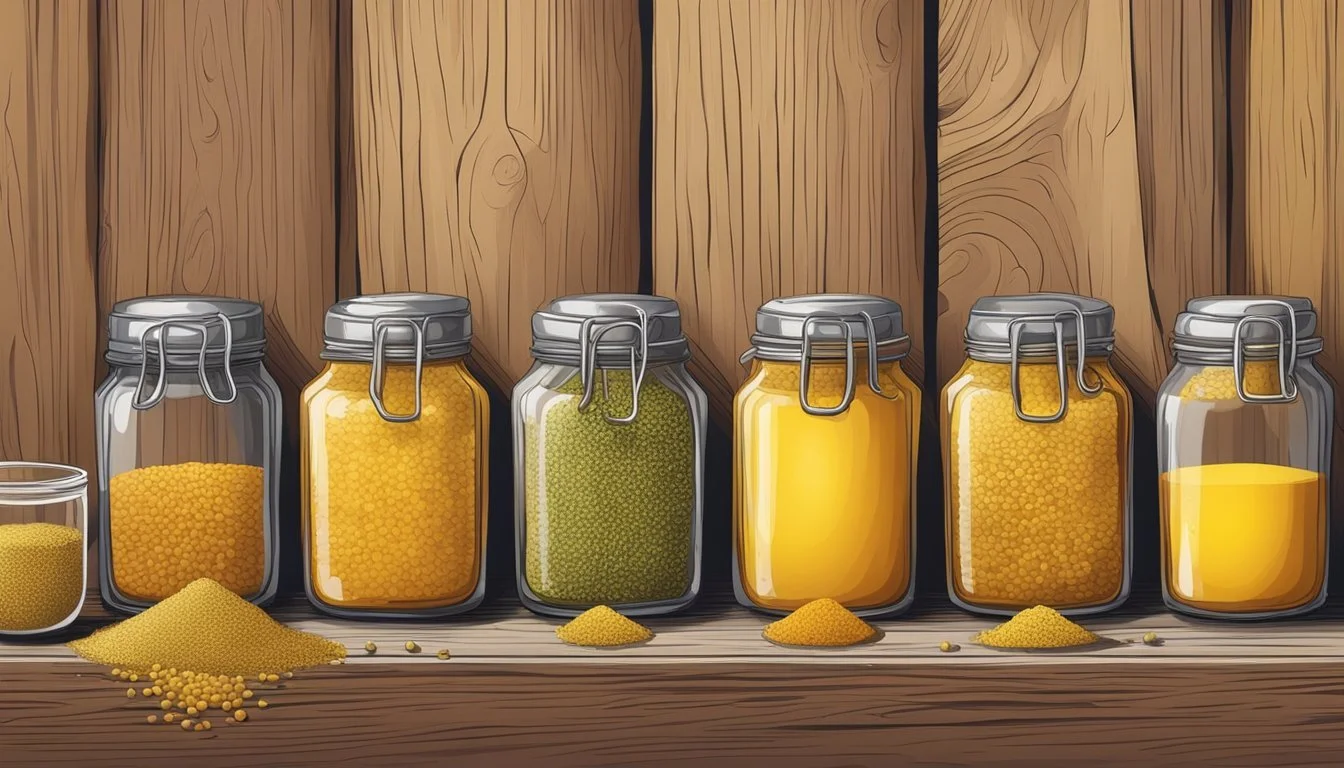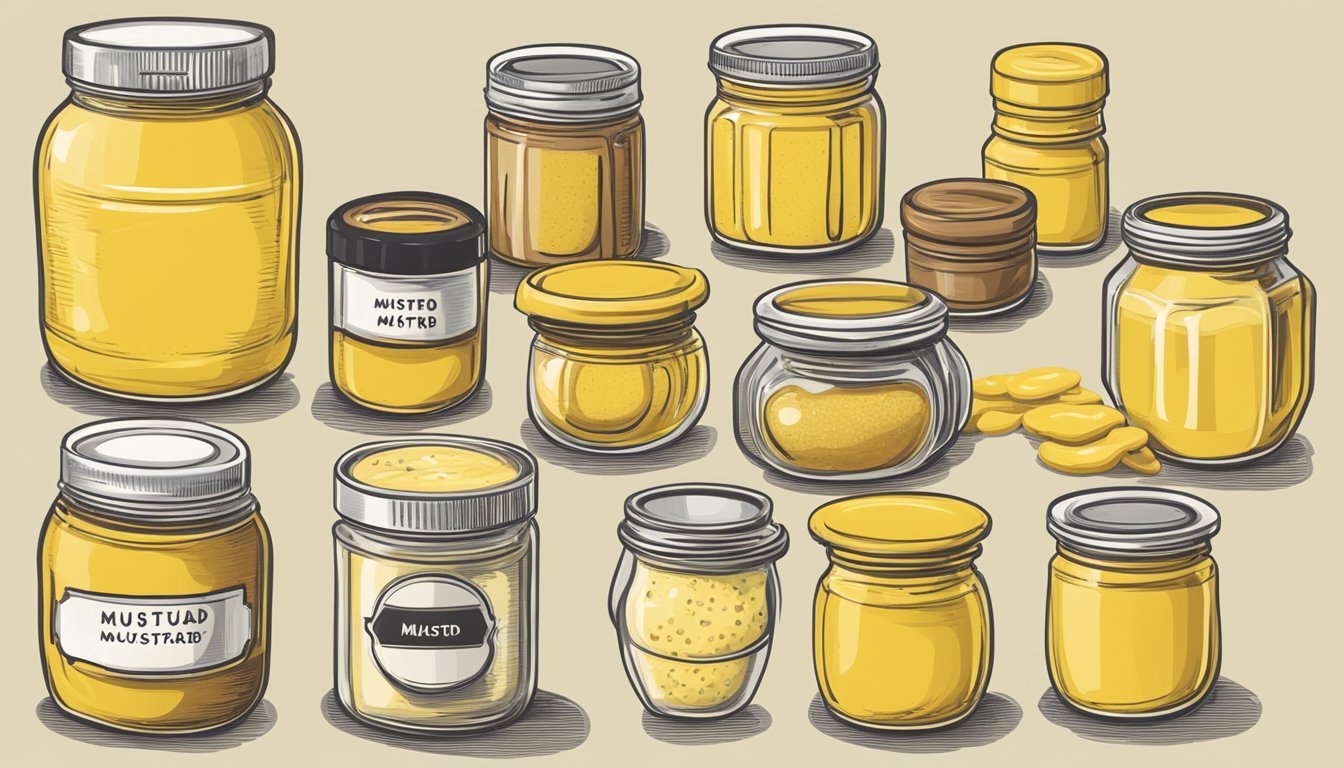Yellow Mustard Substitutes
Top Alternatives for Your Recipes
Yellow mustard is a staple condiment in many kitchens, celebrated for its tangy flavor and vibrant color. It often finds its way into sandwiches, hot dogs, dressings, and marinades. However, there are times when yellow mustard may not be available or when an alternative flavor profile is desired. In these instances, there are several substitutes that can be used to achieve a similar taste and texture.
Substitutes for yellow mustard range from other mustard varieties to completely different ingredients that can mimic its role in recipes. Dijon mustard, for example, is a common alternative that provides a more robust flavor, while mayonnaise can be used to maintain texture in dressings. Each substitute brings its own unique qualities to the table, whether it's for maintaining the visual appeal, emulating the tanginess, or providing a comparable level of spice and flavor complexity.
For those with dietary restrictions or flavor preferences, exploring substitutes can also provide a means to customize dishes. Ingredients like honey mustard offer a sweeter take, while horseradish or wasabi can introduce a sharper, more piquant flavor. Understanding the nuances of each alternative ensures that the essence of yellow mustard's contribution to a dish is preserved, even when the original ingredient is substituted.
Understanding Mustard Varieties
Before exploring suitable yellow mustard substitutes, one must appreciate the diversity of mustard varieties, each with its distinct taste profile and regional affiliation, derived from specific mustard seeds.
Types of Mustard Seeds
Mustard comes from three principal seed varieties: yellow (also known as white), brown, and black mustard seeds. Yellow mustard seeds, the mildest type, are fundamental to making classic Yellow mustard. They are larger in size and have a milder flavor compared to their counterparts. Brown mustard seeds, slightly spicier, are commonly used in Dijon and spicy brown mustards. Black mustard seeds are the most pungent and are often used in Indian cooking.
Mustard Flavor Profiles
Mustards can vary significantly in flavor based on their seed composition and additional spices used. Yellow mustard typically has a tangy and mild taste due to turmeric and vinegar. Dijon mustard is known for a creamier consistency and a sharp, complex flavor profile, often incorporating white wine or grape must. English mustard is stronger and more fiery, usually combining both yellow and brown seeds. Whole grain mustard retains the seeds' texture and offers a robust, rustic taste.
Regional Mustard Varieties
Regional preferences have led to a myriad of mustards:
Dijon mustard, hailing from Dijon, France, is known for its sophisticated profile and is a staple in many European cuisines.
English mustard is notable for its intense heat and vibrant yellow color, making it a favorite in British dishes.
German mustard varies from sweet to spicy and includes a range for every palate.
Through this understanding of mustard varieties, it becomes evident how mustard seeds and regional recipes influence the array of mustards available on the market, leading to distinct choices for both cooking and consumption.
Why Substitute Yellow Mustard?
When it comes to yellow mustard, it is not merely a condiment but an integral part of many recipes. Substitution might be necessary due to allergies, a lacking ingredient in the pantry, or a desire for a different flavor profile.
Allergies and Dietary Restrictions
Certain individuals may have allergies to mustard seeds or additives present in commercial mustard preparations. Others may follow dietary restrictions that disallow the use of mustard. For example, some mustard brands might not be suitable for vegan or gluten-free diets. In such cases, it is crucial to find a substitute that aligns with these health-centric needs without compromising the dish's integrity.
Cooking With What's On Hand
One may find themselves lacking yellow mustard while in the middle of cooking. Checking the pantry or fridge, cooks might need to improvise with available ingredients. A suitable alternative could be another condiment such as mayonnaise, which can mimic the texture and creaminess, or a vinegar-based product to replicate the tanginess.
Taste Preferences and Recipe Innovations
Each person's taste preferences are unique, and sometimes the sharp, tangy flavor of yellow mustard may not align with their palate. Alternatively, chefs and home cooks alike may wish to experiment with recipe innovations. They might incorporate a substitute to add a new dimension of flavor or to tone down the pungency. Options like honey mustard can offer a sweeter profile, while something like horseradish provides a distinct heat.
Common Yellow Mustard Substitutes
Finding a substitute for yellow mustard can be important for both flavor and texture in recipes. This section will guide you through various alternatives to yellow mustard, from Dijon mustard to making your own blend at home.
Dijon Mustard Substitute
If a recipe calls for yellow mustard, Dijon mustard can be an effective substitute. Dijon mustard, containing a complex and sharp flavor profile with a touch of white wine, offers a more intense taste compared to the mild and tangy flavor of yellow mustard. For every tablespoon of yellow mustard, you can use an equal amount of Dijon mustard.
Honey Mustard Alternative
Honey mustard serves as a sweeter alternative to yellow mustard. This condiment combines the mild spice of mustard with the sweet notes of honey, creating a balance that works well in salad dressings and as a dip. In place of yellow mustard, consider using honey mustard to achieve a similar consistency with a subtly sweet taste.
Homemade Mustard Options
Creating a homemade mustard allows for customization of flavors and the use of fresh ingredients. A basic mix could involve:
Dry mustard: Mix ½ teaspoon with 2 teaspoons water to replace 1 tablespoon of prepared yellow mustard.
Turmeric: Adding turmeric to homemade mustard can enhance the vibrant yellow color and impart a subtle earthiness.
To achieve specific taste profiles, different vinegars, salts, spices, or even sweeteners can be incorporated during the preparation.
Spicy Brown Mustard and Other Varieties
Spicy brown mustard can be a replacement that adds a robust, piquant flavor, suitable for hearty meats and sandwiches. Varieties such as wasabi or horseradish can be used in small quantities as they bring intense heat and a sharpness that can dominate the flavor profile if overused.
For milder options, one might look at:
Mayonnaise: Its creamy texture can help maintain the thickness in a dish while adding a smooth, rich flavor.
Salad dressings: Certain creamy dressings might work as substantial fill-ins where yellow mustard is used for emulsification properties.
Remember to adjust the quantities of these substitutes based on their flavor intensity to best match that of yellow mustard in your recipes.
Replacing Yellow Mustard in Recipes
When cooking, it's vital to choose a substitute for yellow mustard that complements the other ingredients in your recipe. Understanding the role of yellow mustard—whether as an emulsifier in dressings or a flavor enhancer in sandwiches—helps in selecting the best alternative.
Adjustments for Marinades and Dressings
In marinades and dressings, such as vinaigrettes, mustard is often used for its emulsifying properties and tangy flavor. If yellow mustard is unavailable:
White Wine Vinegar: An excellent substitute for its acid content, though it should be used sparingly to match the tartness without overwhelming other flavors.
Mayonnaise: While not acidic, it can effectively emulsify and add thickness to the marinade or dressing.
Substitutions in Sandwiches and Burgers
Yellow mustard adds a mild, tangy kick to sandwiches and burgers. Suitable replacements include:
Honey Mustard: Offers sweetness along with the tang, ideal in moderate amounts.
Stone Ground Mustard: While coarser, it provides a similar mustard flavor and a bit of spice.
Alternatives for Salads and Dips
When making salads, such as potato salad, or dips, it's important to balance flavor and consistency:
Dijon Mustard: A common substitute with a more pronounced taste, maintaining quality and texture.
Barbeque Sauce: For a different flavor profile, barbeque sauce can provide tanginess and sweetness.
Modifications for Cooked Dishes
In cooked dishes, yellow mustard often lends depth and spice. When substituted:
Prepared Horseradish: A small quantity can replace yellow mustard to introduce heat.
Wasabi: A touch can add a similar heat to dishes like deviled eggs or a homemade mustard base, but use cautiously due to its intensity.
Non-Traditional Yellow Mustard Substitutes
When traditional yellow mustard is unavailable or an adventurous culinary twist is desired, several non-traditional substitutes can offer the desired creaminess, tang, spice, or color to a dish.
Using Spices and Herbs
In the absence of yellow mustard, the pantry can provide a variety of spices and herbs to mimic its spicy flavor profile. Turmeric can be used for its vibrant yellow color and subtle earthiness. If seeking a spicy kick, ground mustard seeds or a pinch of hot spices like cayenne pepper may be used. These spices can be blended with other wet ingredients to create a paste that resembles mustard in texture and taste.
Sour and Creamy Components
Sour cream offers a creamy texture that can serve as a base for making a mustard-like condiment. It can be combined with spices such as turmeric for color and a small amount of vinegar to add the characteristic tang. Alternatively, horseradish or horseradish sauce can be mixed with sour cream to provide a creamy yet zesty condiment, perfect for smearing on burgers or hot dogs.
Sweet or Tangy Elements
For a balance of sweetness and acidity, other kitchen staples such as ketchup, relish, or barbecue (What wine goes well with barbecue?) sauce can stand in for yellow mustard in recipes. They can be used on their own or jazzed up with additional items. Vinegar, with its sharp flavor, can sharpen the taste profile, whereas adding a bit of sugar can help moderate the tanginess if desired. Wine and oil could be introduced to create a homemade dressing or marinade that brings out a distinct flair in comparison to conventional mustard.
Creating Your Own Mustard Substitute
When store-bought yellow mustard isn't an option, one can prepare a homemade substitute by using ingredients like dry mustard powder, mustard seeds, and common flavorings found in most pantries.
Dry Mustard Powder Base
Creating a mustard substitute from dry mustard powder (ground mustard) involves mixing it with a liquid to achieve the desired consistency and flavor. The basic ratio is:
1 tablespoon dry mustard powder
1 tablespoon water (for a pastier texture)
1 tablespoon vinegar (for tanginess)
A pinch of salt
Optional: 1/2 teaspoon sugar for a touch of sweetness
Mix these ingredients in a non-metallic bowl and let it sit at room temperature for about 30 minutes, allowing the flavors to meld.
Mustard Seed Mixes
For a more authentic mustard flavor, one may opt to grind mustard seeds. There are three primary varieties:
Yellow mustard seeds: milder and less spicy
Brown mustard seeds: a good balance of spice
Black mustard seeds: the spiciest variety
Use these seeds as follows:
Grind the seeds using a mortar and pestle or a spice grinder.
Combine the ground seeds with water, vinegar, and a few pinches of salt.
Add oil to emulsify and attain the texture of prepared mustard.
One can adjust the proportions of yellow, brown, and black seeds depending on the desired flavor intensity.
Seasoning and Flavoring
To season the mustard base:
Start with basic spices like turmeric for color and mild flavor.
Incorporate prepared horseradish or horseradish powder to add a spicy kick.
Add garlic powder, honey, or sugar for complexity.
The process of making your own mustard substitute allows for complete control over the taste, from tangy to spicy, according to personal preference. Ensure proper balance by tasting and adjusting the seasonings incrementally.
FAQs on Yellow Mustard Substitution
What can be used as a substitute for yellow mustard in recipes?
Mayonnaise: One can use mayonnaise to maintain a creamy consistency, though it will not provide a mustard taste.
Dijon mustard or spicy brown mustard: These mustards are more potent and can be used sparingly as a substitute.
Worcestershire sauce: A small amount can be used, particularly in meats and dressings.
Barbecue sauce: Offers a sweeter profile and can replace yellow mustard, especially in barbecue-related recipes.
Are there any substitutes for yellow mustard that can be found in most grocery stores?
In grocery stores, one will usually find Dijon mustard, Worcestershire sauce, and barbecue sauce readily available.
What can maintain the yellow mustard color in a substitute?
Mustard seeds, particularly white mustard seeds found in regular mustard, can help maintain the yellow color in recipes. They also ensure a similar tanginess.
Can spices substitute for yellow mustard in recipes?
Cumin can sometimes act as a substitute, providing an earthy and less pungent taste compared to yellow mustard.
Are there any vegetable alternatives to yellow mustard?
Arugula with a peppery flavor can mimic mustard’s spice in some dishes.
Is it possible to substitute yellow mustard with non-condiment items in soups or stews?
Plain yogurt can contribute to the creamy texture desired in soups or stews, although it may lack mustard’s piquancy.
What is the best way to store mustard substitutes?
Substitutes like mayonnaise, Dijon mustard, and yogurt should be kept refrigerated. Worcestershire and barbecue sauces typically have longer shelf lives and can be stored in a cool, dark place.








